With about 17,000 nail salons across the five boroughs, New Yorkers can get pampered for next to nothing on nearly every block around the city. It’s an industry that serves one of our most basic, albeit superficial, needs: that of being attractive to those around us. So perhaps it is not terribly surprising that few thought to look beyond the surface coat to see what actually goes into curating the NYC mani-pedi experience. The reality for nail technicians and their health, it turns out, is anything but pretty.
A few months ago, New York Times reporter and Columbia Journalism alumna Sarah Maslin Nir published an in-depth look at the heartbreaking exploitation of New York manicurists in “The Price of Nice Nails”. She then chronicled the devastating health effects on those workers in “Perfect Nails, Poisoned Workers". In it she recounted the horrifying stories of cancer diagnoses, fingerprints lost from repeated handling of corrosive chemicals, women with multiple miscarriages, and common chronic respiratory illnesses among those in the industry. Subsequent stories have highlighted the government’s response to the investigation as well as recommendations on the socially-conscious manicure.
Yet, according to Professor David Rosner of Columbia’s Mailman School of Public Health and the Department of History, this is just one piece of the larger mosaic of NYC workplace health and safety violations that dates back to the turn of the 20th century. Columbia Surgery's Andrew Meyerson sat down with Dr. Rosner to get his insight on the surprisingly dark side of the everyday manicure.
——————————————————————————————
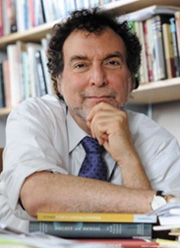
David Rosner, PhD, MPH, is the Ronald H. Lauterstein Professor of Sociomedical Sciences at Columbia’s Mailman School of Public Health. He focuses on research at the intersection of public health and social history, as well as the politics of occupational disease and industrial pollution. He has been actively involved in lawsuits on behalf of cities, states and communities around the nation who are trying to hold the lead industry accountable for past acts that have resulted in tremendous damage to America's children. Dr. Rosner is an author of many books on occupational disease, epidemics and public health. Lead Wars: The Politics of Science and the Fate of America's Children, details the recent conflicts at Johns Hopkins over studies of children placed in homes with low level lead exposure and what it says about public health research.
—————————————————————————————
Unfamiliar with the NYT Nail Salon exposé? Watch this CBS News report:
—————————————————————————————
FIRST REACTION
“My first reaction to this story was that it’s amazing how many people are put at risk from various kinds of chemicals and how it took this kind of investigative report to bring public attention to this obvious exploitation. We walk by these places every day – nail salons, dry cleaning operations, food stores – where workers are exposed to all sorts of dangers. We somehow just block from our consciousness the horrors these kinds of exposures represent. It’s just sad that it took this kind of major, major effort for us to open our eyes for a second. So that was my first reaction: How can we be so ignorant? How can we be so myopic? How could we be so exploitative?”
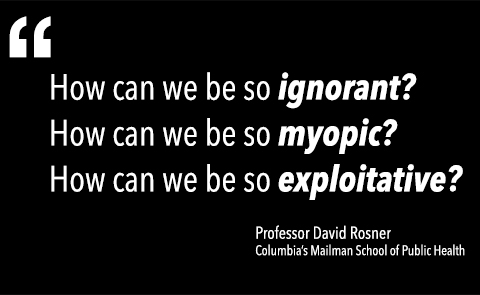
—————————————————————————————
HISTORICAL CONTEXT
“I’m an historian, that’s how I see the world. I see the world in terms of continuities and discontinuities. I see the world in terms of change. So to me this story was shocking but just all-too-familiar. We think that because New York State started regulating factories after the 1911 Triangle Shirtwaist factory fire that took the lives of 146 people that such tragedies would cease. In that factory, the owners locked all but one exit. Apparently they didn’t want the employees to take extended breaks or to steal items so they funneled everyone through a single door. The problem was that when the fire happened, there was no way out and many people leapt from the building to try and survive. Heartbreaking. But it certainly wasn’t the last violation of workplace safety. We believe that all workplaces should be safe by now, but they're not.”
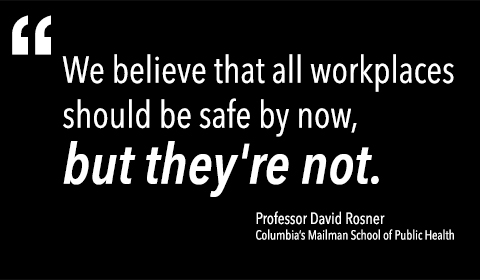
146 People Killed in Triangle Shirtwaist Factory Fire
“These stories are all-too-familiar. During the 1920s young women in New Jersey were exposed to radiation from different kinds of radium paints used to make glow-in-the-dark watch dials. These women came down with terrible cancers and we passed new workplace safety codes as a result. Yet, the regulations were weak and the exploitation continued.”
Watch this short film “Glow” to learn more about the “Radium Girls.”
Radium Poisoning From Glow-In-The-Dark Paint
“Oh and we can’t forget about the matchmakers in the early part of the century who died from phosphorus exposure because matches were made with phosphorus. The women developed “phossy jaw" which caused necrosis of the jaw, brain damage, and which eventually killed them. Awful stuff. And again, we wondered, “Oh my god, how could this happen here?” and we think we’ve address it by passing special legislation. Yet, the outrage continues. Generation after generation suffer because they are in some sense slaves to these industries and slaves to be exploited. They have no rights and are invisible. It’s just really sad.”
Watch this video to learn more about the history of Phossy Jaw:
Phosphorus Poisoning & Necrosis of the Jaw
——————————————————————————————
IMPACT OF LEGISLATION
Shortly after the NYT story broke, Governor Andrew Cuomo announced a task force to identify and punish nail salon owners who violate worker’s rights and safety as well as protocols for nail salon employees to better protect themselves from the exposure of chemicals. One of the results of that increased government oversight was a new Worker’s Bill of Rights.
“Will legislation be effective? I don’t know. We’d like to think of this as the real answer. We think that by addressing it with one piece of legislation aimed at one industry that we’re actually dealing with this in a meaningful way. History tells us that it’s never that simple.”
Government Responds to Nail Salon Story
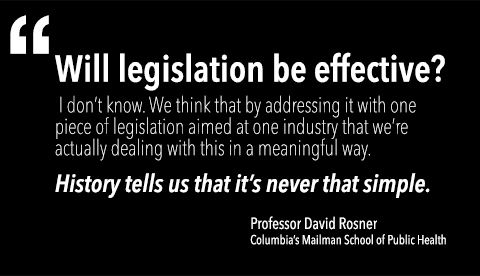
“And this is in many ways really part of the extraordinary exploitation that goes into the development of so many of the products that we use in our everyday lives. Think about what our iPhones are made out of, our university badges, the bottles we drink from, think about what those are made of. So many of these products contain chemicals that we know cause problems for the people who are manufacturing them and for some of the people consuming them. We are so focused on curing illnesses and addressing problems only after they become public and also only when we have conclusive, epidemiological evidence about their dangers. Even then, it’s always a bitter fight with the offending industry to remove certain toxins from their products.”
—————————————————————————————
WE'LL SURVIVE WITHOUT THE DANGEROUS CHEMICALS
“People have gotten their nails done and have looked pretty good for most of world history. It’s not like these nail salons provided an essential service or that the chemicals are something we can't live without. It wasn't in, let's say, 1993, when we discovered how to ‘do nails.’ We’ve lived well before acrylics on your nails and we’ll probably be able to adjust fine without them, but certainly to me, the argument that these materials are worth the costs in terms of human lives is pretty vacuous.”
“Look, Kings and Queens managed to do their nails perfectly well for the last 3,000 years, and they managed to have their nails look just fine. The world will not fall apart if we’re a bit more cautious about what chemicals we use during manicures. I’ve never had it done so I don’t know the joys of a good mani-pedi, but I have a hunch that it’s not absolutely essential to life.”
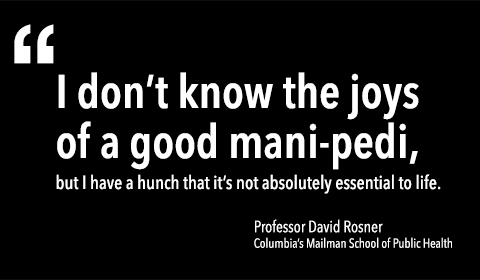
—————————————————————————————
CLOSING THOUGHTS
“If you think about the exploitation of people in general it’s a pretty horrible system where we can go in for ten bucks and undermine these women’s lives. It is obscene that we have them live in shelters, wearhousing them for our pleasure. Then on top of it there are the diseases from exposure to chemicals and the suffering they have endured. It’s just awful. The world will go on if we make manicures safer for everyone. “
“I hope things change but ultimately, I suspect that we’ll still explain these journalistic revelations as anomalies, as exceptions. That’s how we protect ourselves and how we make sure that we don’t feel too bad about how we use other people. Today, thousands of workers are dying from asbestos related diseases and hundreds of thousands of children are suffering various effects of lead exposure. I fear the story will continue.
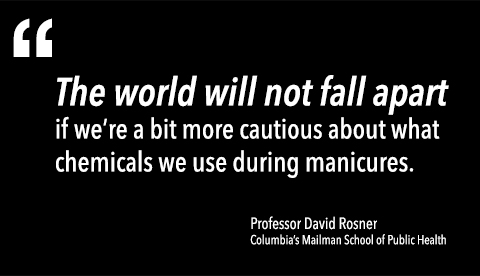
“This wasn’t the first story of workers in New York City being exposed to health hazards on the job and it certainly won’t be the last. I’m glad that some light was shined on this exploitation and I certainly hope for the best, but history tells me to remain vigilant. Some things never change.”
-----
Check out other interesting stories in our "History of Medicine" series:
